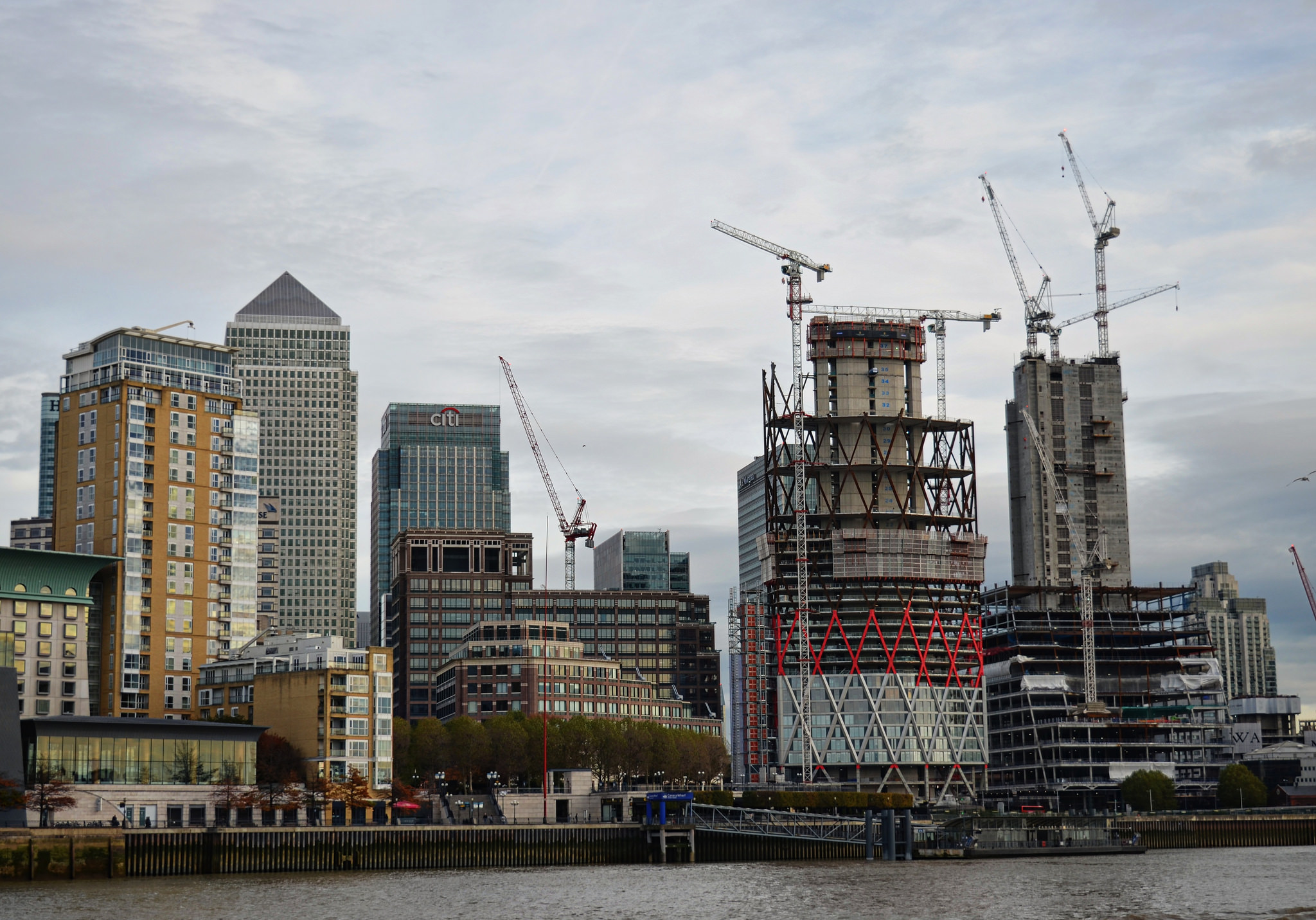
Examples of London’s relentless urban regeneration. Photo: Dun.Can, Flickr.
A peace process assembled after more than 50 years of conflict, a freshly elected government and admission to OECD all point to a brighter future for Colombia.
More opportunity for the nation of yellow, blue and red comes from rapidly increasing tourist numbers, falling poverty levels, a burgeoning middle class and a huge international appetite for corporate investment. To capitalise – and aided by the improved security environment – Colombia’s authorities will need to focus increasingly on the domestic agenda. And, close to the top of the priority list must sit high quality, sustainable urban regeneration.
In the 1970s the UK was described as ‘the sick man of Europe’, beset by industrial strife, the recipient of cash bailouts from the International Monetary Fund and suffering years of woeful economic performance and humiliating currency devaluations. Without a doubt, the UK’s darkest days in modern history. And London – scarred by large-scale post-war decay and with its joke-worthy public transport – was its dirty, crime-ridden capital city. Urban wastelands were a common feature of London’s landscape caused by the abandonment of heavy Victorian-era industry, wartime bomb damage and decades of population decline.
Today, London is one of the most vibrant, cosmopolitan and successful cities in the world, attracting 50 million international visitors a year with inhabitants from all corners of the globe including more than 25,000 Colombians. Crime rates are low, the choice of parks and open spaces is endless, streets are generally clean, safe and good quality and public transport is extensive, albeit expensive.
The truth is, Bogotá suffers from an urban environment which compares badly with other major world cities – like London – which serve a similar population. Despite the Andes providing a magnificent backdrop, public open space in Bogotá is rare; the streets are choked with vehicles and not friendly to pedestrians; roads are punctured by countless potholes, some big enough to stop a tank; missing manhole covers provide hazards every few yards and broken paving stones and piles of abandoned waste are common.
At the start of the second world war in 1939, London’s population was 8.1 million (the same as 2018). By 1981 it had fallen to 6.6 million as people moved to the city outskirts and beyond for a cleaner, safer and better quality of life. The 12 inner London boroughs were worst affected – they saw a 50% reduction in residents and a consequential loss in social capital and economic activity. But today those same 12 boroughs, like Wandsworth, Camden, Islington and Hackney, are amongst the most expensive and desirable areas to live in the UK. Their populations have been drawn back by the proximity to their jobs and hugely improved environments.
What reversed the tide and brought life back into a blighted city and re-gained London’s global appeal? The answer is simple, high quality and successful urban regeneration. So what can Bogotá learn from London’s dramatic post-war transformation?
Firstly, successful urban renewal takes a long time, sometimes a generation. It can be very disruptive, affecting the lives of residents and businesses. It demands the sustained and patient effort by many authorities, agencies and groups, each with their own priorities. How can this challenge be overcome? By ensuring all groups are acting to support a long-term vision from the outset, crafted through extensive consultation with all interested stakeholders. Schemes simply imposed by the state are destined to fail. London’s 16 square kilometres of abandoned docklands were regenerated over the course of a generation through a stakeholder corporation, now widely regarded as a template for urban renewal. This is particularly relevant to the stop-start plans for a Bogotá metro.
Secondly, urban change needs leadership and a sense of purpose at all levels, from politicians at national and local levels to civic leaders and community groups. In 2012, London hosted the most successful Olympic Games to date. The Olympic Park was sited on a massive industrial wasteland in East London and provided urban regeneration on an enormous scale with a legacy comprising housing, open spaces, sports facilities, shops, offices, public transport and road improvements. Without doubt, a triumph for effective and professional leadership at levels.
Thirdly, the state cannot and should not do it all. The private sector, with its huge experience and resource, must play a role. The government should act as the enabler through public policy, attracting investment, sometimes providing seed funding, assembling joint ventures and challenging the private sector to deliver. The transformation of London’s Victoria will shortly be completed by the private sector after ten years of construction. But it was the Westminster Council, Transport for London and Government that enabled the project. Authorities working to address the problems in downtown Santa Fe may do well to involve the private sector to ensure a successful turnaround of the area.
Fourthly, urban regeneration schemes should be anchored by new or improved public infrastructure. For decades, London’s Kings Cross was synonymous with prostitution, crime and drugs. However, ten years post renewal, millions pass through London’s spectacular Kings Cross and St Pancras Stations, work in the adjacent offices or attend the nearby University of the Arts London. Mercifully, old sordid Kings Cross is long forgotten.
Fifthly, urban regeneration should include as much open and public space as possible, capitalising on natural assets. Bogotá has very limited open space for its inhabitants and demand will only grow as society changes. Post-war, London’s river Thames was flanked by endless abandoned, dangerous and ugly Victorian age industrial buildings. Today, these former waterside wastelands provide much needed housing and a riverside ribbon of open spaces and economic activity that runs for many miles.
Sixthly, the single most important thing for residents, businesses and visitors is a sense of safety. People live where they feel safe, work where they feel safe and only travel to where they feel safe. Urban regeneration has a significant role in crime reduction. For this reason, London’s Metropolitan Police are consulted on ways to build out opportunities for crime. An issue that’s particularly relevant in the Colombian capital where the 2017 ‘Cómo Vamos‘ report showed that 54% of citizens felt insecure in the city.
Lastly, these principles are not limited to the mega project covering a large area but apply equally to a small square or single street.
Danny Chalkley is a Director of Boxmill, a proud Londoner and has been project managing urban regeneration projects for more than 25 years @BoxmillDevs





